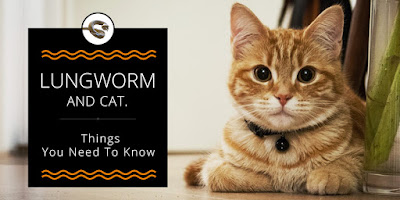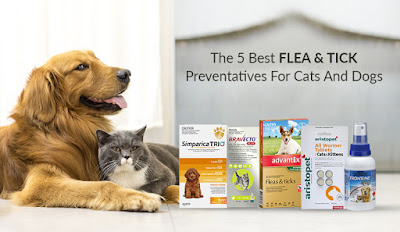How many times have you wished there was a solution for carrying too much stuff at once while out on a stroll with your dog? Or some kind of technology that could make your hectic life a little easier so you could better care for your four-legged best friend? Or maybe you can check in with them while you’re out running errands?
Fortunately, some clever people have already done the thinking and inventing for you! The following are some important dog supplies that you will never believe you could live without until today.
01|Leash for Dogs
The dog leash, often known as a lead, ties you to your dog. It is your dog’s safety line back to you that keeps them safe.
Even if your family has a fenced-in yard, a leash is essential for a variety of reasons. A leash can assist direct your puppy away from distractions during potty training.
When it comes to going to the vet, your dog will need to be leash trained. It’s also a good idea to have a leash on hand for walks around the neighborhood.
Even if you have a yard, walks keep your dog entertained and stimulated, and they are a crucial component of the human-puppy bonding and training process.
02|Dog Crate
Many people are put off by the sight of a crate but don’t be put off by its appearance. The crate is used to assist your puppy with potty training, and with little training, it may become a personal space for your dog to relax and feel comfortable.
It’s also a great spot to leave your dog when you can’t keep an eye on them to keep them safe. When you’re cooking supper and can’t keep an eye on the pet, this is a wonderful example. You can keep your puppy occupied by placing them in their crate with their favorite chew instead of allowing them to roam the house unsupervised.
Potty accidents, inappropriate chewing, undesired behaviors, or dangerous circumstances could result from roaming the house alone. When company comes over, a wonderful crate will be safe, durable, and quickly packed up and stored, and it can travel with you when you need to bring your puppy along.
03|Dog bed
During the house training procedure, you should get a dog bed that will fit into your puppy’s kennel.
When the puppy is in the kennel for naps or resting at night, he can lie on the bed. The bed will make the crate a cozier place for your dog, making them feel safer. Get one for your dog and make him feel extremely at ease.
O4|Food Bowl
Since your puppy will have a voracious appetite while developing, it is vital that your dog has a familiar food bowl that they may use every day for their meals.
Some plastic bowls are easily misidentified as toys, and pups are prone to knocking them over or chewing on them. We recommend that you get your dog a dishwasher-safe ceramic bowl.
05|ID tags
A personalized pet ID tag is a must-have item because, if your dog ever goes missing, the information engraved on the tag will allow anyone who discovers them to return your dog home.
Consider your dog’s identification tags to be their “ticket home” if they become lost. Your dog is unable to explain where they reside, who their owners are, or their phone numbers. Include your dog’s name and phone number on the tag so that anyone who finds your dog can contact you.
Your address, other phone numbers, and your name or social media handle are all optional information to place on an identity tag.
06|Collar
To keep your dog's identifying tags on them at all times, we recommend a leather dog collar with a buckle.
This matches with the ID tags above, so if your dog ever goes missing, the information engraved on the tags will help them find their way home.
A metal buckle is difficult to break, thus the collar must be strong. With those nylon collars and plastic buckle clips, too many pets have been lost or maimed. They simply aren’t as dependable.
07|Flea and Tick Protection
Unfortunately, huge fur coats provide excellent breeding grounds for parasites to feed and hide. Few of us bathe our dogs more than once or twice a month because regular bathing would not only remove necessary skin oils but also dry out their skin.
Flea/tick treatments, mainly in the form of topical ointments but also as chewable pills, are recommended by every veterinarian. Ticks can carry disease and fleas can readily build infestations if not kept in check, despite the fact that they usually do not pose a serious threat.
These parasites can also make your pet very uncomfortable. Some dogs are allergic to a flea’s saliva, and though most tick bites do not prove fatal, some do. Lyme disease is spread by ticks, and some ticks, such as the Australian paralysis tick, are highly deadly to our pets.
08|Heartworm Prevention
Heartworm preventatives, whether monthly or annually, are also essential treatments that every dog owner should provide. While fleas and ticks may not kill your dog, heartworm infestations can result in death if left untreated. If your dog contracts the parasite as a result of a mosquito bite, treatment for the ongoing infection can be costly, and irreversible damage is frequently the outcome.
Heartworm prevention is the best treatment for any dog. Even more important than flea and tick prevention, every dog owner should give their dog a monthly heartworm preventative or an annual injectable.
09|Harness
Most dogs should use a harness instead of a neck collar when walking on a leash. Neck collars can place a lot of strain on the muscles and trachea in the neck.
Harnesses come in a variety of styles, including body harnesses, chest harnesses, and face harnesses. For small to medium dog breeds, we recommend body or chest harnesses, and for giant breeds, choose face harnesses.
These various harness styles are available in a variety of dog sizes. A harness distributes pressure evenly throughout the device, and some harnesses can aid with tugging problems.
10|Toys
Dogs require activities to keep their minds busy and interested.
There are many different sorts of dog toys available for your puppy to play with. Toys that keep your dog active include retrieve balls, tug-of-war toys, plush toys with squeakers, and puzzle toys.
11|Training Clicker
Clicker training is a dog training approach that uses a clicking noise to signal your dog is doing what you want them to do at the exact moment you produce the noise.
You can link a reward to the click sound made by your dog training clicker, so your puppy learns that the click is a good thing. Clicker training is a type of positive reinforcement that may be used to teach a variety of commands to your dog.
We recommend enrolling your new puppy in puppy obedience lessons with a dog trainer to learn how to train your dog appropriately.
12| Treats
Last but not least, there are treats! Treats are essential for using in positive reinforcement dog training with your dog. We recommend getting soft chew dog training treats.
To avoid overfeeding your puppy, always use little bits of a treat during training. Your dog will prefer certain flavors over others, and this will vary based on your puppy’s personality.
Further Reading
Allow your beloved dog to run about and play. Give them an abundance of love and happiness. Take care of your beautiful pooches with the above-mentioned necessary pet items and pet supplies. Purchase branded items to ensure quality and utility. Because of their reputation, cost, and reliability, choose brands with a good rating and positive reviews. Our canine companions live for the day, the hour, and the moment. They are not our entire lives, but they do make them complete. So, as they give their best, give them the best!















